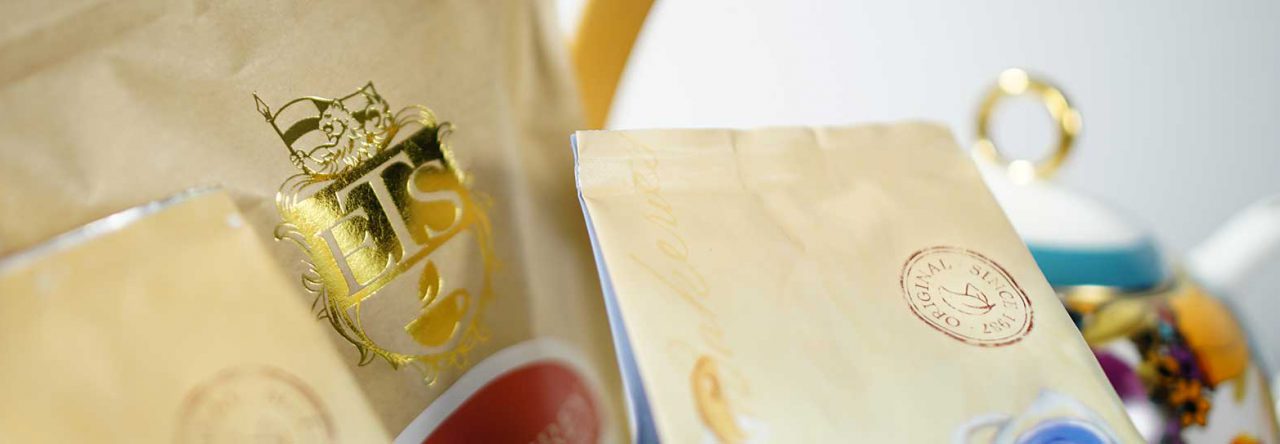
An Assam tea is an Assam tea is an Assam tea — right? Well, not quite. Just as with Darjeelings, Chinese greens and blacks, and others, how an Assam tea tastes, dry and steeped, can be affected by a number of factors. Growers and processors try new things, too. A recent innovation (around 1978) was Golden Tips Assam tea.
“Golden” often signifies the best. Gold medals in sports, gold stars on homework to show it’s well-done, the “golden years” as the best time of our lives, and so on. “Tips” is the tip of the leaf from the tea bush (Camellia Sinensis). That tip has the natural sweetness prized in teas. Golden Tips Assam means the best tips (also called “buds”), bringing you the most pleasant tea experience.
Overall, Assam is known for its malty, roasty flavor. Golden Tips, though, takes this Assam experience to a new level. The secret is in the processing of the leaves where, as with most teas, the final flavor is often determined. Assam tea is processed quickly, but with Golden Tips Assam tea, the rolling portion of the process (after the tea leaves are withered) is done very lightly, preserving those precious tips.
This tea is so well-liked that many tea vendors have to place their orders ahead of the harvest to be sure of getting a sufficient supply. In fact, getting a Golden Tips Assam that is pure “golden tips” is rare. The tea is so in demand that most growers blend it with regular Assam teas, thus spreading around the “golden tips” name along with their ability to charge a higher price. I have a box of what is labeled as Golden Tips Assam but suspect that it is such a blend. No problem as far as I’m concerned, since I like the more malty flavor of the lower grade Assam teas — sort of like someone who prefers hot dogs to filet mignon or Chicken Kiev.
For those of you who want to try the honey quality of a pure Golden Tips Assam, check out Harney & Sons, a company that has been carrying this tea since Michael Harney discovered it in 1990.
They also recommend that when steeping, you follow these guidelines:
- Use water that has not quite reached a boil or that has boiled and been allowed to cool for 30 to 60 seconds.
- Steep for 4 to 5 minutes (you might want to try your own steeping experiment and taste the tea “liquor” after 2 or 3 minutes).
According to Michael, the tea “liquor” should have these qualities:
- Full-bodied (tastes very rich)
- Caramelly (also called buttery)
- Retains a slight maltiness due to the quick withering of the tea leaves
- Possibly some fruitiness, sort of like tropical fruits like mango and papaya
A few good “go-withs” are: chicken (fried or roasted), baked ham, mushrooms, foods made with cinnamon or nutmeg, bacon, hamburgers, baked beans, lasagna, pecan pie, and Mexican dishes. Oh, yeah, for you chocoholics, try Golden Tips Assam with some dark chocolate on the side. (Any excuse to eat chocolate!)
Check out A.C.’s blog, Tea Time with A.C. Cargill, for more on the wide world of tea!



Leave a comment